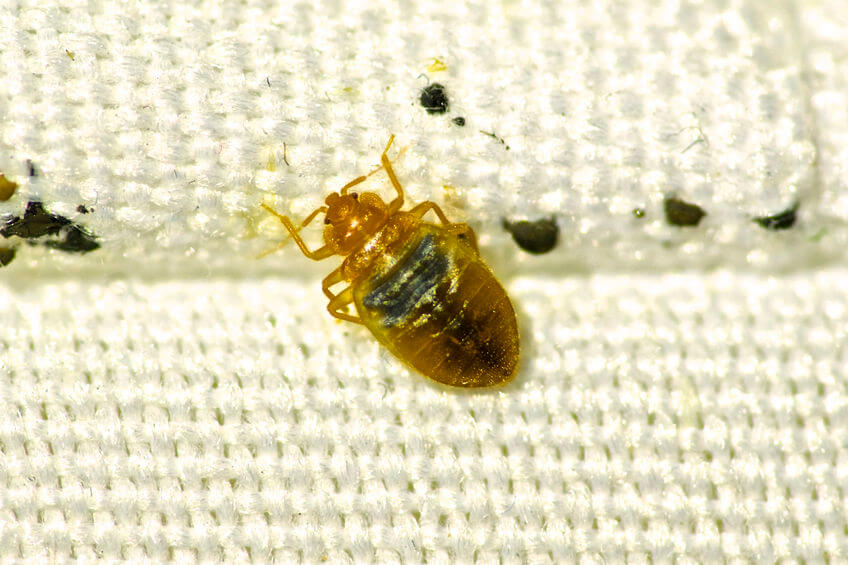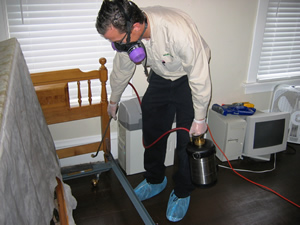Checking Out the Scientific Research Behind Bed Insect Warmth Treatments as a Lasting Parasite Monitoring Approach
One such approach that has actually acquired traction in recent years is the use of heat treatments to combat bed pest problems. The ins and outs of just how warmth properly eliminates bed pests and the broader effects for lasting bug administration practices make this a subject worth discovering even more.
Bed Insect Heat Treatment Process

Thermal Fatality Factor for Bed Insects
Revealing bed pests to elevated temperature levels past their thermal resistance array is essential for achieving effective removal in warm treatment processes. By getting to and preserving temperature levels over the thermal fatality factor for bed insects, bug administration experts can make sure detailed elimination of bed bug populations, consisting of hard-to-reach locations where chemical therapies may be less effective. Understanding the thermal fatality factor for bed insects is vital for carrying out successful heat therapy methods and accomplishing sustainable pest monitoring end results.
Advantages of Heat Treatments
Having actually established the crucial thermal death factor for bed bugs, it is crucial to now check out the significant benefits that warmth treatments use in successfully eradicating these resistant bugs. One of the key benefits is that heat can pass through deep into splits and crevices where bed insects conceal, ensuring that even the most hard-to-reach areas are heated up to lethal temperatures.
Furthermore, warm treatments are eco friendly and non-toxic, making them a sustainable pest administration method. Unlike chemical pesticides, warm therapies do not leave harmful residues that can posture risks to human health or the atmosphere. This element is particularly crucial in delicate environments such as healthcare facilities, colleges, and residential areas where chemical use may not be desirable.
In addition, warmth therapies have a high success rate in getting rid of bed insect problems in a solitary treatment, reducing read this the requirement for multiple gos to and decreasing disturbance to residents. This efficiency not only saves money and time but also offers tranquility of mind to those managing bed insect troubles.
Effectiveness of Heat Treatment

Research researches have actually consistently shown the effectiveness of warmth therapies in achieving a high price of bed pest mortality. Properly performed heat therapies can reach all the cracks and gaps where bed insects may be nurturing, guaranteeing a detailed strategy to elimination. Warmth treatments have the added advantage of eliminating bed pest eggs, which are typically immune to standard chemical therapies. Generally, additional resources the effectiveness of heat therapies in eradicating bed bug infestations makes them a lasting and reputable insect administration strategy.
Lasting Insect Monitoring Advantages
Carrying out sustainable bug monitoring methods uses long-term advantages for both the setting and public wellness. By using methods such as heat treatments for parasite control, we can reduce the dependence on harmful chemical pesticides that can have adverse impacts on communities and human wellness - bed bug heat treatment. Sustainable parasite management techniques aid in maintaining biodiversity by targeting specific insects without damaging non-target organisms, thus maintaining a well balanced environment
In addition, lasting bug administration practices contribute to the general health and health of the public. By reducing exposure to hazardous chemicals made use of in standard bug control approaches, heat therapies give a safer choice for pest monitoring in domestic, commercial, and public areas. This decrease in chemical usage also aids in preventing chemical residues from contaminating water, soil, and air, safeguarding environmental quality.
Final Thought
To conclude, bed insect warmth treatments have actually been shown to be a reliable and lasting insect administration method. The thermal fatality factor for bed pests makes them prone to warmth treatments, which have various benefits over conventional chemical therapies. The efficiency of warm treatments in removing bed bug problems while minimizing ecological influence highlights the capacity of this method as a lasting option for parasite control.
The bed bug warm treatment process includes increasing the temperature within infested locations to a level that effectively eliminates bed pests and their eggs. By reaching and preserving temperatures over the thermal death factor for bed pests, bug administration professionals can ensure extensive elimination of bed insect populaces, including hard-to-reach areas where chemical treatments might be less efficient. One of the main benefits is that heat can permeate deep into splits and holes where bed insects conceal, making certain that even the most hard-to-reach areas are heated to deadly temperature levels. Unlike chemical treatments that might leave behind immune populations, warm treatments provide a ecologically friendly and non-toxic remedy that can penetrate deep right into furnishings, wall surfaces, and various other hard-to-reach locations where bed bugs conceal.
The thermal fatality point for bed pests makes them at risk to warm therapies, check my source which have numerous advantages over conventional chemical treatments.